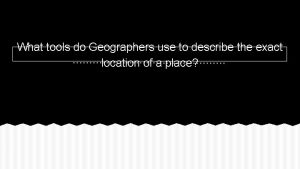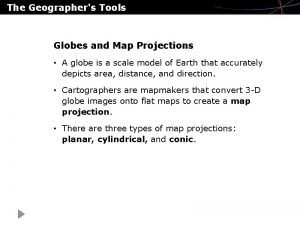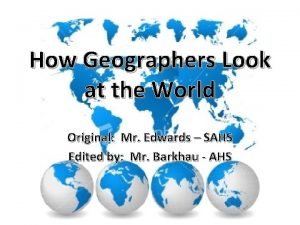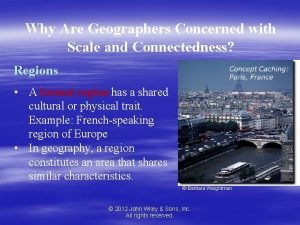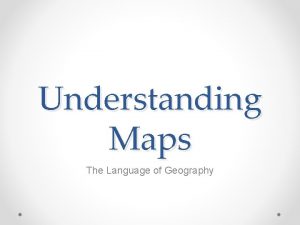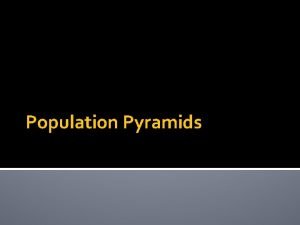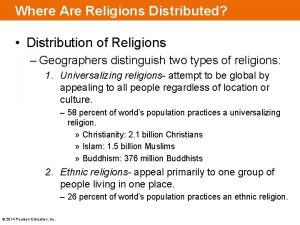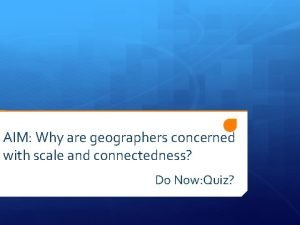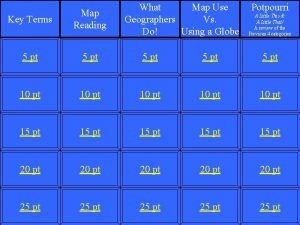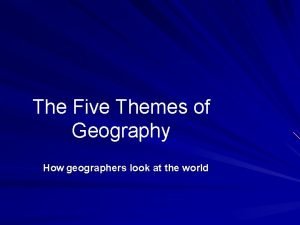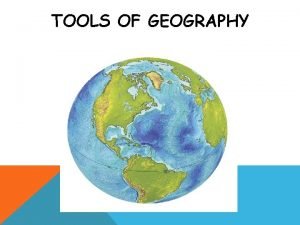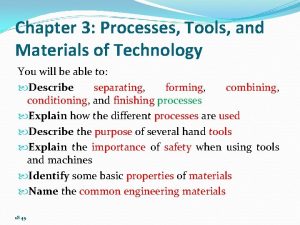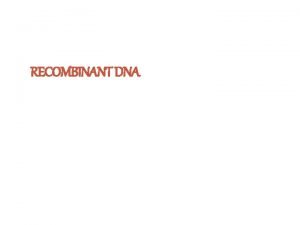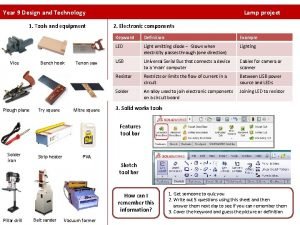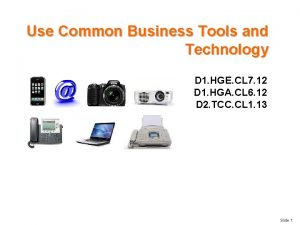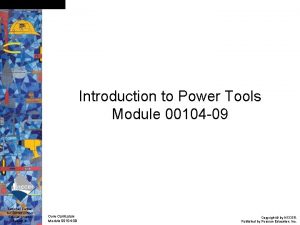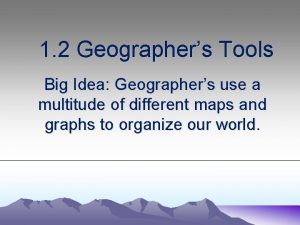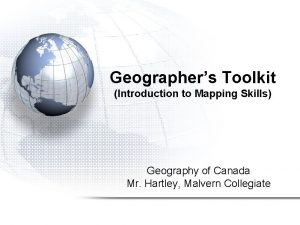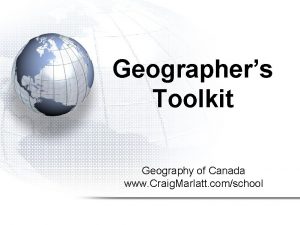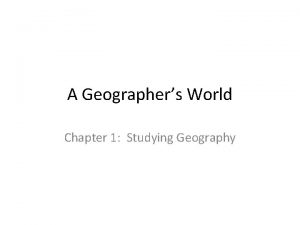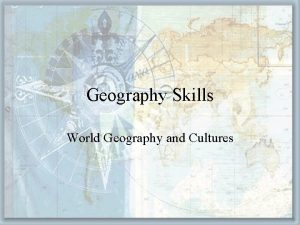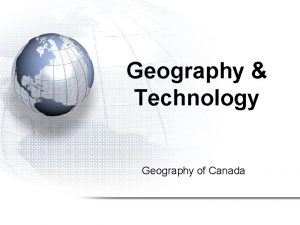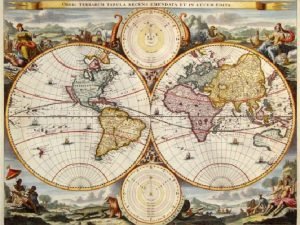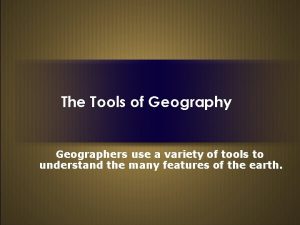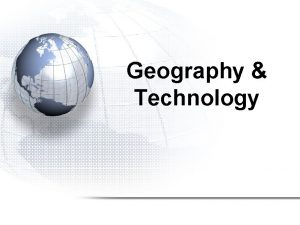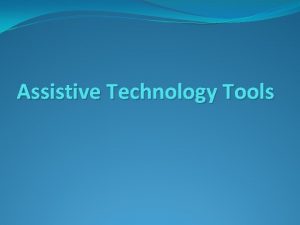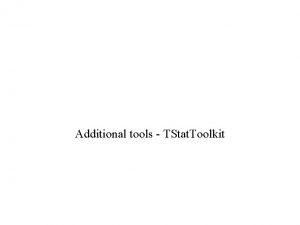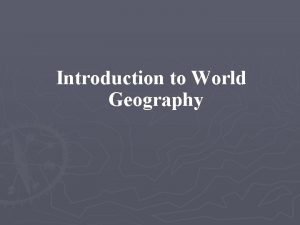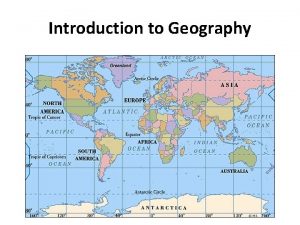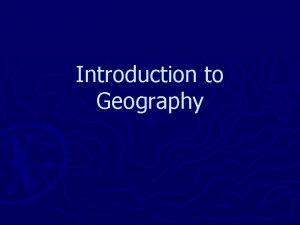A Geographers Toolkit Introduction to Geography Tools Technology






















- Slides: 22

A Geographer’s Toolkit Introduction to Geography, Tools & Technology, & 6 Essential Elements

Cornell Note-Taking Method Notes color-coded in RED go on this side of the line. These items will include: Main Ideas Big Concepts Vocabulary Words Notes color-coded in BLUE go on this side of the line. These items will include: Supporting details Dates, Times, and Biographic details Vocabulary Definitions Any items in BLACK text are optional. Remember: the more thorough your notes, the more prepared you will be for exams.

History of Geography Ancient Era, Age of Discovery, Modern Era

Ancient Era Geography- the study of the distribution and interaction between physical and human features on Earth’s surface “Geo” (the Earth), “Graphia” (to describe)= To describe the Earth Notable Greek Geographers Eratosthenes- Chief Librarian in Alexandria, 1 st to calculate circumference of the Earth, 1 st to calculate tilt at Earth’s axis Pythagoras- asserted the Earth was round Hipparchus- developed the grid system, lines of latitude and longitude that run across the Earth

Ancient Era Chinese Geographers The Chinese studied and developed geographic theories simultaneously as the Greeks, but not many records were left behind. Liu An, Pei Xu, Jia Dan… Islamic Geographers Developed and studied maps before the Greeks (Babylon, 9 th Century BCE), and became more advanced as time went on. Abu Rayhan Biruni- mapped cities, measured distances, used trigonometry to calculate Earth’s circumference (off by 17 km)

Age of Discovery European Age of Discovery Christopher Columbus, Marco Polo, John Cook revived need for accurate mapping details. John Harrison invented the chronometer to establish the distance between meridians 18 th/19 th Centuries Geography became an actual academic subject 20 th Century- new methods and tools come into use, including study of geometrics (the storage, processing, and delivery of geography information) and statistics

Modern Age Physical Geography Examines the natural environment and how climate, vegetation, water, soil, and landforms are produced and interact. Human Geography Examines the human use of and understanding of the world and their interactions with it. Focus on SUSTAINING the development of the built world.

A Geographer’s Toolkit

Tools Maps Globes Two- Dimensional (2 D) Three- Dimensional (3 D) Show a specific area of the Earth at one time View the way the Earth travels in space Only half of the Earth can be viewed at one time Not practical or portable Drawn to scale Portable & easy to use Maps are distorted due to spherical Earth being flattened

How Are Maps Made? Cartographers, a person who creates maps, decides what type of map they want to create. Field surveys are conducted, in which observations, measurements, and records are made of the specific area. Remote Sensing- use of satellite and/or aerial photos of the area. Information is stored in a database, like GIS. Computers transform measurements into a map. Map Projection- the representation of a globe on a flat map, using a grid of lines of latitude and longitude

Geography Technology GPS Global Positioning System of satellites and radiosignal devices that make it possible to accurately pinpoint your geographic location Can also be used to generates routes for travel GIS Geographic Information System Computerized system that gathers information about Earth’s surface in order to better understand patterns, data, and trends. Makes it possible to digitally layer maps on top of each other to fully understand information about location.

The Grid System- the parallels and meridians that form an imaginary grid over Earth’s surface, making it possible to locate a specific point. Hemispheres- one of the halves into which the Earth is divided. Prime Meridian- 0˚, divides the Earth between Eastern and Western Hemispheres. Runs directly through Greenwich, England, UK

The Grid System Latitude Longitude aka Parallels, lines that never intersect. aka Meridians, intersect at North and South Poles. a geographic coordinate that specifies the North-South positions of a point on Earth’s surface a geographic coordinate that specifies the East-West positions of a point on Earth’s surface

A Geographer’s Playlist What Do These Songs Have In Common? “It’s a Small World” “We Know the Way” By Maroon 5 By Billy Joel “A Thousand Miles” By John Denver “Uptown Girl” By Jerry Reed “Take Me Home, Country Roads” By Billy Currington “Maps” From “Hercules” “Good Directions” “East Bound & Down” From “Moana” “Go the Distance” From that one ride at Disneyland By Vanessa Carlton “Highway 20 Ride” By Zac Brown Band

6 Essential Elements of Geography

6 Essential Elements Used by geographers in order to categorize information about the changes taking place on Earth’s surface. (aka 5 Themes of Geography) Spatial Terms Places & Region Physical Systems Human Systems Environment & Society Uses of Geography

Spatial Terms Location- WHERE IS IT? Absolute Location- exactly where it is using latitude and longitude or an address ( 37 N, 63 W or I live at 123 North Ave. ) Relative Location- Where something is located according to something you already know ( I live Near the Baptist Church or Tampa is about an hour west of Orlando. )

Places & Regions Place ( what it is like, makes it unique or special) – Physical Characteristics- Mother Nature put it on the earth, natural Human Characteristics- people put it on the earth, man-made Region- share more than one characteristic with another place, like natural characteristics (climate, landscape) or cultural characteristics (language, religion, government) Formal Region- countries, states, and cities that share certain characteristics like the same language, laws, government, etc. Functional Region- A central place and the surrounding places affected by it; ex. RGV, DFW, Houston Metro Perceptual Region- Area defined by people’s feelings and attitudes about the area; ex. The Valley, Cowboy Country,

Physical Systems Natural changes – How physical processes or disasters like hurricanes, volcanoes, and glaciers shape and change the earth’s surface Communities of Plants and Animals – how they depend on the one another and their surroundings for survival (biomes and natural habitats)

Human Systems Movement is how things move from place to place. (This can be the exchange of people, ideas and/or beliefs, and goods. ) Describes how people have shaped our world.

Environment & Society Human-Environment Interactions- studying the social factors that causes changes in the environment, the impact people have on those changes, and the efforts to solve or limit those changes. How humans effect the environment: Good effects- planting trees for oxygen Bad effects-pollution from industries How the environment effects human: Good effects- growing crops on the side of the mountain Bad effects- the weather effects the clothing and shelter

Uses of Geography Understand the relationships among people, places, and environments over time Understand the past and prepare for the future
 Geographers tools
Geographers tools Geographers tools
Geographers tools Perceptual region definition
Perceptual region definition Why are geographers concerned with scale and connectedness
Why are geographers concerned with scale and connectedness Why do geographers call arabia a crossroads location
Why do geographers call arabia a crossroads location What map is this
What map is this Why do geographers use population pyramids
Why do geographers use population pyramids 3 major branches of christianity
3 major branches of christianity Why are geographers concerned with scale and connectedness
Why are geographers concerned with scale and connectedness What basic questions guide geographers
What basic questions guide geographers How geographers look at the world worksheet answers
How geographers look at the world worksheet answers Frq format ap human geography
Frq format ap human geography 5 themes of geography ap human geography
5 themes of geography ap human geography Proruption ap human geography
Proruption ap human geography Tools of geography
Tools of geography The appropriate cutting tool used in cutting fabrics
The appropriate cutting tool used in cutting fabrics Types of cutting tools
Types of cutting tools Technology tools and equipment names
Technology tools and equipment names Complementary genes example
Complementary genes example Design technology tools
Design technology tools Use common business tools and technology
Use common business tools and technology Section 4 biologists tools and technology
Section 4 biologists tools and technology Nccer introduction to power tools
Nccer introduction to power tools
